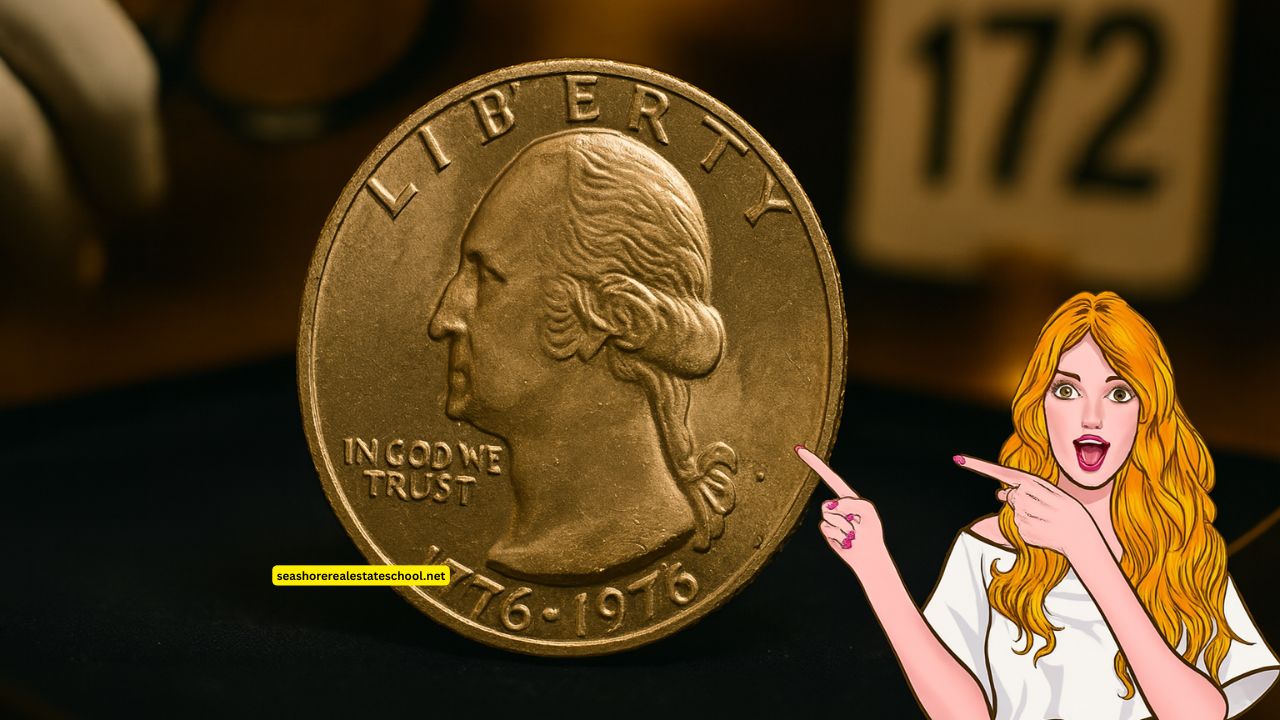A startling discovery has electrified coin collectors and everyday Americans alike: a 1976 Bicentennial quarter carrying an exceptionally rare minting error recently fetched $1.1 million at private auction—proof that treasures may still be lurking in your pocket change
What Makes This Quarter So Valuable?
- Design & Era: Issued from July 4, 1975 to January 1, 1977, the 1976 Bicentennial quarter features a colonial drummer and dual date “1776–1976”
- Minting Error: The record-breaking specimen exhibited a rare misprint—experts suggest a die defect such as misaligned die or filled die anomalies, making the drummer motif appear distorted
- Rarity: Fewer than five coins with this exact error type are thought to still be in circulation.
- Grading: The sale occurred at a professional-coin-grade level, confirming near-perfect condition (likely MS‑67 or higher).
Key Details
| Category | Detail |
|---|---|
| Coin | 1976 Bicentennial quarter (“1776–1976” drummer reverse) |
| Error Type | Rare die deficiency (possible misalignment / filled die) |
| Population | Fewer than 5 known; one sold recently |
| Sale Price | $1,100,000 (private auction) |
| Condition | Graded by PCGS/NGC—likely MS‑67+ |
| Standard Value | Most typical Bicentennial quarters trade at $0.25–$60 depending on grade |
| Silver Proof Variant | 1976‑S silver proof coins sell around $19,200 |
Context: Why Most 1976 Quarters Aren’t Worth Much
Despite striking nearly 2 billion standard and clad Bicentennial quarters, only select specimens with extreme grade or error attributes command high prices.
Regular examples hold face value to tens of dollars depending on condition—rare grades like MS‑66 and MS‑67 fetch premiums of $5–$50 as of 2025
Identifying a Potential Million-Dollar Coin
To verify whether a coin is rare, look for:
- Designer Detail: Crisp drummer motif; missing or distorted elements hint at filled die errors.
- Diameter & Alignment: Misaligned upper and lower relief, often a result of die shift.
- Mint Mark or Finish: The Philadelphia and Denver coins usually lack S‑marks; silver‑proof 1976‑S pieces are distinct.
- Certification: Submit to PCGS or NGC for confirmation of grade and legitimacy.
Market Comparison
| Variant | Typical Value (2025) |
|---|---|
| Standard circulated | $0.25 |
| MS‑65 graded | $10 |
| MS‑67 / MS‑68 | $25–$5,000 depending on grade |
| 1976‑S Silver Proof | ~$19,200 |
| Rare Error Quarter | $1.1 million |
Why the $1.1 Million Sale Matters
- Record-breaking: This sale surpasses previous Bicentennial quarter sale records.
- Public interest surge: Media buzz spurred by headlines claiming $7 million values may exaggerate—but the $1.1 M sale is verified
- Awareness Ignite: It’s a wake‑up call for collectors and casual savers—never dismiss an unusual 1976 quarter.
That mundane 1976 Bicentennial quarter in your pocket could be worth a fortune—$1.1 million—if it bears an ultra-rare error and high grade.
Although the odds are staggeringly slim, the recent sale proves treasure can still hide in plain sight. Examine your change carefully, especially those with the drummer-boy design. Certification can reveal whether you’re holding mere pocket change or numismatic gold.
FAQs
Could my pocket contain this rare coin?
While extremely unlikely, it’s possible. With fewer than five known, check for weird details like misaligned drummer or missing design elements and get any suspect coin certified.
How do I authenticate the error?
Coin grading services (PCGS, NGC) will assess your coin’s error type and grade. Without certification, it won’t fetch a high value.
Are 1976 silver‑clad proof quarters valuable too?
Yes—1976‑S silver proof Bicentennial quarters graded high can reach ~$19,200, but lack the unique error driving the $1.1 M value.

